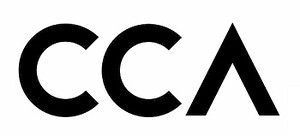A Counter-History of the Modern Canadian Environment
November 16, 2016–April 9, 2017
1920 rue Baile
Montréal Québec H3H 2S6
Canada
On the occasion of Canada’s 150th anniversary in 2017, the CCA presents an exhibition that challenges basic assumptions about the country’s relationship to nature. Curated by CCA Director Mirko Zardini, It’s All Happening So Fast: A Counter-History of the Modern Canadian Environment explores the contradictory relationship between Canada’s idealized wilderness and its simultaneous exploitation of the environment.
In an age of unprecedented human impact on the planet, certain countries stand out for their privileged positions and the complexity of their relationships with regard to the land. Canada’s stories follow the discovery and appropriation of vast and varied natural resources, yet today, the country’s environmental record is one of the poorest among wealthy nations. It is a fact that suggests ambivalence and the actions of competing interests, which are most often exposed through disasters—moments of disorder, and disregard for the unexpected consequences of managing the country’s seemingly endless bounty.
The exhibition’s narratives span a history of Canada’s relationship with the land since 1945 to expose complex connections among different interests, competing cultural myths, an evolving legal context, changing ideas of environmental risk, resurgent Indigenous Peoples, and the impact of the environmentalist movement. As a call for action, the project illustrates the necessity to take positions in the face of the climate crisis, from radical efforts like David Suzuki’s Carbon Manifesto to more contemporary and diverse engagements by architects, landscape architects, urban designers, artists, and activists.
It’s All Happening So Fast goes beyond traditional historical exhibition and employs a multitude of materials to create intersecting narratives by multiple voices—including protagonists of the modern project, Indigenous Peoples, environmentalists, lawyers and judges, artists and photographers, and architects of alternative energy visions. Each of the exhibition’s narrative sequences includes environmental disasters representing six organizing themes: the failure of the modern project; resource exploitation in Canada’s northern territories; development of energy infrastructures; nuclear contamination; water and air pollution; and industrial fishing and forestry operations.
The exhibition features works by Douglas Coupland including large sculptures and a series of slogans from which the exhibition title is inspired. It further features historical photographs of idyllic landscapes by William Notman and Alexander Henderson, northern landscapes by Richard Harrington and Robert Frank, 1960s industrial activity by George Hunter, and sites of nuclear production by Sam Tata. Contemporary photographs illustrate active radar stations in Labrador and Nunavut by Donovan Wylie and Margo Pfeiff, areas of nuclear contamination and production by Blake Fitzpatrick and Robert Del Tredici, views of the Great Lakes by Robert Burley, logging operations by Lorraine Gilbert, the 1993 Clayoquot protests by Ian Wallace, and Cornelia Hahn Oberlander’s landscape design in Yellowknife by Etta Gerdes. Also included are projects such as a 1981 solar house by Pierlucio Pellissier and Giovanni De Paoli, the PEI Ark built for the New Alchemy Institute in 1976, proposals by Ralph Erskine and Van Ginkel Associates for settlements in northern Canada, designs by OMA and Bruce Mau Design for Downsview Park in Toronto, variations on normative practices of camping by Lateral Office, Peter von Tiesenhausen’s Lifeline Fence, and Robert Smithson’s Glue Pour.
Exhibition design: Kuehn Malvezzi (Berlin) / Graphic design: Pitis e Associati (Milan/Paris)
To mark the exhibition opening on November 16, the CCA invites the public to a live taping of diverse answers to the challenge posed by the exhibition. Invited guest speakers include Douglas Coupland, Eriel Deranger, Cornelia Hahn Oberlander, Annabel Soutar, and David Suzuki. Video recordings will be made available online.
A complementary publication also entitled It’s All Happening So Fast: A Counter-History of the Modern Canadian Environment is edited by Lev Bratishenko and Mirko Zardini, and is co-published with Jap Sam Books, Heijningen, The Netherlands. It reframes Canada through 15 case studies of environmental disasters since 1945, from nuclear accidents to withdrawals from international legal conventions and the uncontrolled spread of genetically modified organisms. These stories are contextualized by interviews with Taiaiake Alfred, David. R. Boyd, Bill Darnell, Marianne Nicolson, John Ralston Saul, David Suzuki, Terri-Lynn Williams-Davidson, and Graeme Wynn. Graphic design: Christian Lange.


